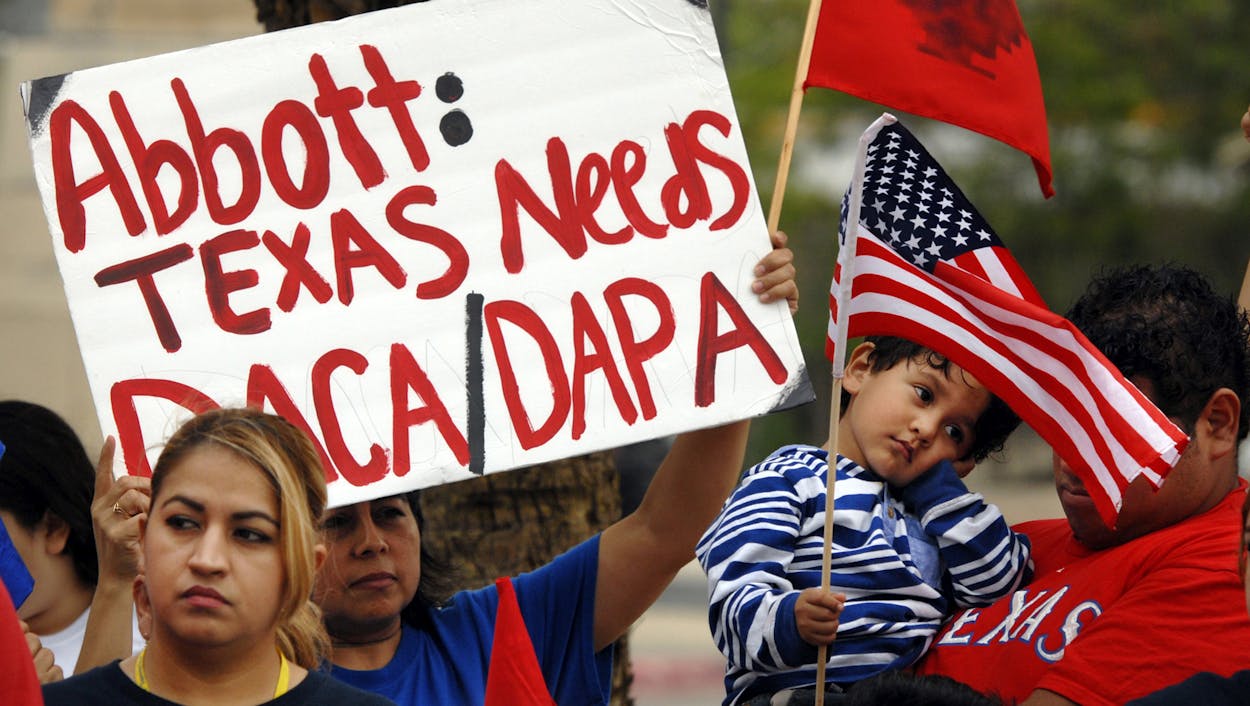Yesterday the Fifth Circuit Court of Appeals, on a 2-1 vote, ruled against the implementation of one of Barack Obama’s signature immigration initiatives. The Deferred Action for Parents of Americans and Lawful Permanent Residents program, or DAPA, was an initiative Obama announced in 2014, after Congress failed to pass a comprehensive immigration reform bill. It built on the efforts Obama began in 2012, with the Deferred Action against Childhood Arrivals program (DACA), which directed the Department of Homeland Security to exercise discretion in enforcing immigration laws against unauthorized immigrants who arrived in the country as children. Under DACA, applicants who met the eligibility requirements—no criminal record, etc—would be protected from deportation, and could apply for a temporary work permit. In light of Congress’s ongoing intransigence, Obama explained in 2014, he would use executive action to expand the eligibility criteria for DACA; he was also directing Homeland Security to create a corollary program, DAPA, to provide a similar layer of protection for the parents of such children.
Obama’s announcement was heralded on the left in part because—as the Fifth Circuit ruling (PDF) makes clear—the potential impact of the president’s executive orders is huge. There are about 11.3 million unauthorized immigrants in the United States, about 1.2 million of whom qualified for legal protection from deportation and temporary work authorization under DACA’s original parameters; by the end of 2014, some 636,000 had applied. Obama’s new executive actions would potentially extend protection to many more. Some 4.3 million unauthorized immigrants, per the government’s calculations, would have been eligible for legal protections under DAPA alone.
To date, though, no one has received legal protection from deportation or a temporary work permit through DAPA. In December 2014, a month after Obama announced his new plans, a coalition of states, led by Texas, sued to block implementation of the executive actions. In February, a district judge in Brownsville ruled that the federal government could not proceed to implement the program until the courts had weighed in on its constitutionality. The Fifth Circuit, siding with Texas and the other 25 states that had joined the lawsuit, ruled that it is not.
Yesterday’s ruling will probably not be the final word on the subject; the Department of Justice has confirmed that it will appeal the Fifth Circuit’s ruling to the Supreme Court. But in the interim, I hope that advocates for immigration reform stop to consider what they’re fighting for.
In announcing the new program, Obama anticipated the criticism he was likely to receive:“To those members of Congress who question my authority to make our immigration system work better, or question the wisdom of me acting where Congress has failed, I have one answer: Pass a bill.” He has continuously cast his decision to proceed by executive action as the lesser of two evils. In the face of a moral crisis, Congress has refused to act; that being the case, the ends justified the means.
Personally, I think that’s bogus. It’s true that in 2013, the Senate passed a comprehensive immigration reform bill only to see it fizzle in the House, where a number of Republicans were loudly refusing to consider any reform bill that included a pathway to citizenship, and Democrats may be correct in saying that these objections were only a fig leaf for Republicans who secretly didn’t want any immigration reform. But we’ll never know, because Democrats, in turn, insisted that it was unthinkable to consider an immigration reform bill that did not include a pathway to citizenship. Obama’s criticism of Congress, in 2014, effectively hinged on the premise that the legislature is the executive’s stenographer, as opposed to an entirely separate branch of the federal government, with different rights and powers. People of good faith can disagree, I suppose, over whether the president overstepped his authority here, but the constitutional question doesn’t hinge on his moral goals.
And those who share the president’s moral commitment to immigration reform would do well to read the Fifth Circuit’s ruling. In defending its plans, the administration argued that DAPA should be viewed as an exercise in prosecutorial discretion: “‘lawful presence’ is not a status and is not something that the agency can legally enforce; the agency can alter or revoke it at any time.” The Fifth Circuit rejected that argument on the basis that there’s no rule that exercises in prosecutorial discretion are exempt from judicial review. But still, that’s the administration’s own argument, and it’s a telling one. Even if the Supreme Court rules that the Obama administration may proceed to implement the president’s immigration program, DAPA remains a program rather than a law. It may have been the best Obama could manage under the circumstances, but it’s nonetheless a program that the next president can just as easily undo. With millions of lives hanging in the balance, advocates for immigration reform should hold out for more.







